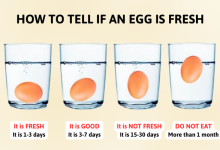You may be excited to order a cast iron skillet and start cooking your favorite dishes. But, you must know when using them—and when another pan might be better for the type of food you’re making. Here are some foods you should and shouldn’t in cast iron.
What not to cook in cast iron

Most people who cook with cast-iron pans love them with the heat of a thousand suns. After all, they’re a must for so many one-skillet meals, and they’re handy for everything from breakfast to dessert (no, really!). However, as good as your skillet can be for making all these favorites, it’s not a tool suited for all foods.
Some foods that it’s best to avoid cooking in cast iron:
1. Smelly things

Garlic, peppers, some fish, stinky cheeses, and more tend to leave aromatic memories with your pan that will turn up in the next couple of things you cook in it. Ten minutes in a 400ºF oven will generally get rid of the smell, but it’s best to avoid cooking foods that would be ruined by those lingering aromas for the next few cooks.
2. Omelets

Omelets and other egg dishes can stick to the surface when you try to remove them from a cast-iron skillet. That means, in addition to serving up an ugly omelet, you may be tempted to soak your pan to get it clean, which will definitely remove the seasoning. Go for an enamel pan instead, and those perfectly folded omelets will slide out with ease.
3. Other Foods that Stick

Like with omelets above, you may have trouble with foods like pancakes or fried rice, especially when the pan is new and not well-seasoned yet. When the pan is nicely seasoned, these foods should do just fine — but until then, you may need to, say, scrape the pancakes off the bottom, and then scrub the residue off while you’re cleaning it.
3. Wine-Braised Meats

It’s not the greatest idea to cook foods that require deglazing with wine or vinegar in a cast-iron skillet. Unless your skillet is perfectly seasoned, the acid in the foods can leach small amounts of metal into your food, giving it an off-taste and potentially harming your health
4. Delicate fish

The same heat retention that means your steak will get a beautiful brown crust in a cast iron pan will probably be the end of your lovely piece of trout or tilapia. Save the delicate fish for the non-stick pan, too. But salmon and other meaty fish that can stand the heat are fine.
5. Desserts

Some of your favorite desserts like pie and cornbread can be baked to perfection in a cast-iron pan, it’s true. It also adds an appealing crisp edge to cakes and quick breads, and it can go straight from the stovetop to the oven. But here’s something to consider: If you mainly cook savory foods in your skillet, those residual flavors can transfer into whatever you’re baking, giving your dessert an unexpected flavor. The best solution: two skillets! Then you can designate one for garlicky stir-fries and another for the sweet stuff.
6. Acidic things (maybe)

Some people say that tomatoes or lemons can react with the metal and cause it to leach into the food and break down the seasoning of the pan. Others believe that’s a myth.
One thing to note: This list is for traditional cast-iron pans. If you’ve got an enamel-coated cast iron pan, you don’t need to adhere to this list—you can just get cooking!
BONUS: A few ideas work really well in a cast-iron skillet:
1. Fried Chicken
A cast-iron pan is ideal for fried chicken, because it holds in the heat well, even when you drop the chicken into the hot oil. You can cook up tender and juicy breasts and legs in no time.
2. Pan Pizza
The pan is just the right shape, and here’s where the whole “put it right in the oven” thing really works well! You can turn out a pizza that the whole family will love in no time.
3. Fruity Upside-Down Cake
This recipe uses cranberries, but you could use any type of frozen berries to turn out a splendid cake that serves a whole bunch of people! You start the recipe on top of the stove, and end up with it in the oven, turning the top a delicious toasty brown.







